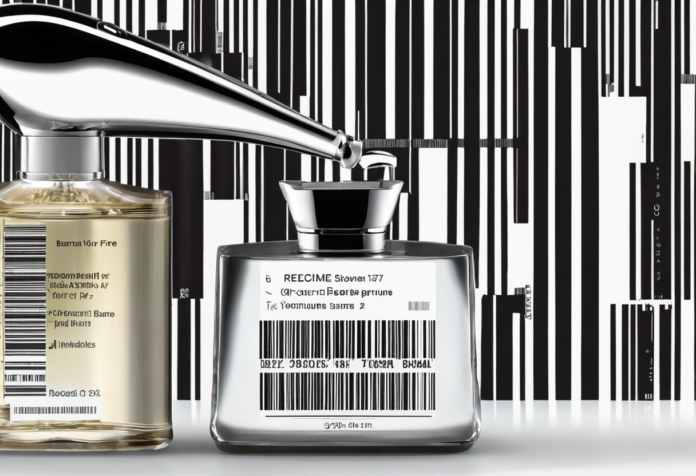The fragrance industry, with its blend of artistry and science, holds a unique place in the consumer market. As with any high-value product, maintaining authenticity, managing inventory, and ensuring consumer satisfaction are paramount. This is where barcodes come into play. These seemingly simple sequences of lines and numbers are powerful tools that help streamline operations, combat counterfeiting, and enhance the overall consumer experience. This article will take you through the essentials of fragrance barcodes, exploring their significance, functions, and future potential.
Understanding Fragrance Barcodes
At their core, barcodes are a method of encoding information in a visual pattern that can be read by a machine. In the fragrance industry, barcodes are typically found on product packaging and play a crucial role in various aspects of the business.
- Identification and Traceability: Each fragrance product is assigned a unique barcode that serves as its identifier. This code links the product to a database containing information such as the product name, batch number, production date, and ingredients. This system ensures that every item can be traced back to its origin.
- Types of Barcodes: The most common barcodes used in the fragrance industry are UPC (Universal Product Code) and EAN (European Article Number). These barcodes are widely recognized and can be scanned globally. Additionally, QR (Quick Response) codes are becoming increasingly popular due to their ability to store more information and interact with smartphones.
Ensuring Authenticity
Counterfeiting is a significant issue in the fragrance industry, costing companies billions in lost revenue and damaging brand reputation. Barcodes play a critical role in combating counterfeit products.
- Unique Identifiers: Each product’s barcode is unique, making it difficult for counterfeiters to replicate. Scanning the barcode can instantly verify whether a product is genuine or fake.
- Blockchain Integration: Some companies are integrating barcodes with blockchain technology. This combination provides an immutable record of a product’s journey through the supply chain, enhancing transparency and security. Consumers can scan the barcode to access this information and confirm the product’s authenticity.
Inventory Management
Efficient inventory management is crucial for the fragrance industry, where product ranges can be extensive, and demand can fluctuate seasonally.
- Accuracy: Barcodes eliminate the errors associated with manual inventory tracking. Each scan updates the inventory in real-time, ensuring accurate records.
- Efficiency: Scanning barcodes is faster than manual entry, reducing labor costs and freeing up staff to focus on other tasks. This efficiency is particularly beneficial during peak seasons or when managing large inventories.
- Data Analytics: The data collected from barcode scans can be analyzed to identify sales trends, seasonal demands, and consumer preferences. This information is invaluable for strategic planning and marketing.
Enhancing Supply Chain Management
The fragrance industry relies on a complex supply chain that includes raw material suppliers, manufacturers, distributors, and retailers. Barcodes play a critical role in managing this supply chain efficiently.
- Tracking Shipments: Barcodes allow for precise tracking of shipments throughout the supply chain. Each time a product moves from one point to another, its barcode is scanned, providing an update on its location and status.
- Reducing Theft and Loss: The ability to track products at every stage of the supply chain helps reduce theft and loss. If a product goes missing, its last known location can be identified through barcode scans.
- Improving Efficiency: Automated systems that use barcodes can significantly improve the efficiency of supply chain operations. This automation reduces the need for manual checks and paperwork, speeding up the process and reducing the risk of human error.
Marketing and Consumer Engagement
Barcodes are not just for inventory and supply chain management; they also play a vital role in marketing and consumer engagement.
- QR Codes for Information: Many fragrance brands are now using QR codes on their packaging. Consumers can scan these codes with their smartphones to access detailed information about the product, including ingredients, manufacturing process, and authenticity verification.
- Personalized Marketing: By analyzing the data collected from barcode scans, brands can gain insights into consumer behavior and preferences. This data can be used to create personalized marketing campaigns that target specific consumer segments.
- Loyalty Programs: Barcodes are often used in loyalty programs to track consumer purchases and reward them accordingly. This use of barcodes enhances customer engagement and encourages repeat purchases.
Regulatory Compliance
The fragrance industry is subject to various regulations regarding product safety, labeling, and environmental impact. Barcodes can help ensure compliance with these regulations.
- Product Information: Barcodes can store extensive information about a product, including its ingredients, batch number, and expiration date. This information is crucial for regulatory compliance and can be easily accessed through barcode scans.
- Recall Management: In the event of a product recall, barcodes allow for quick and efficient identification of affected products. This capability helps companies respond promptly to recalls, minimizing the risk to consumers and protecting the brand’s reputation.
- Sustainability Tracking: Barcodes can be used to track the environmental impact of products. For example, they can provide information on the recyclability of packaging materials or the carbon footprint of the product. This transparency is increasingly important to consumers who prioritize sustainability.
Future Potential of Barcodes in the Fragrance Industry
As technology continues to evolve, the role of barcodes in the fragrance industry is likely to expand even further. Here are some potential future developments:
- Smart Packaging: Integrating barcodes with smart packaging technologies, such as NFC (Near Field Communication) tags, could provide even more information and interactivity for consumers. These tags can store vast amounts of data and offer enhanced security features.
- Enhanced Consumer Experience: Future barcode technologies could offer consumers a more interactive experience. For example, scanning a barcode could provide access to virtual try-ons, personalized fragrance recommendations, or augmented reality content.
- Blockchain Integration: Combining barcodes with blockchain technology could provide an immutable record of a product’s journey through the supply chain. This integration would enhance transparency and security, making it even more difficult for counterfeit products to enter the market.
